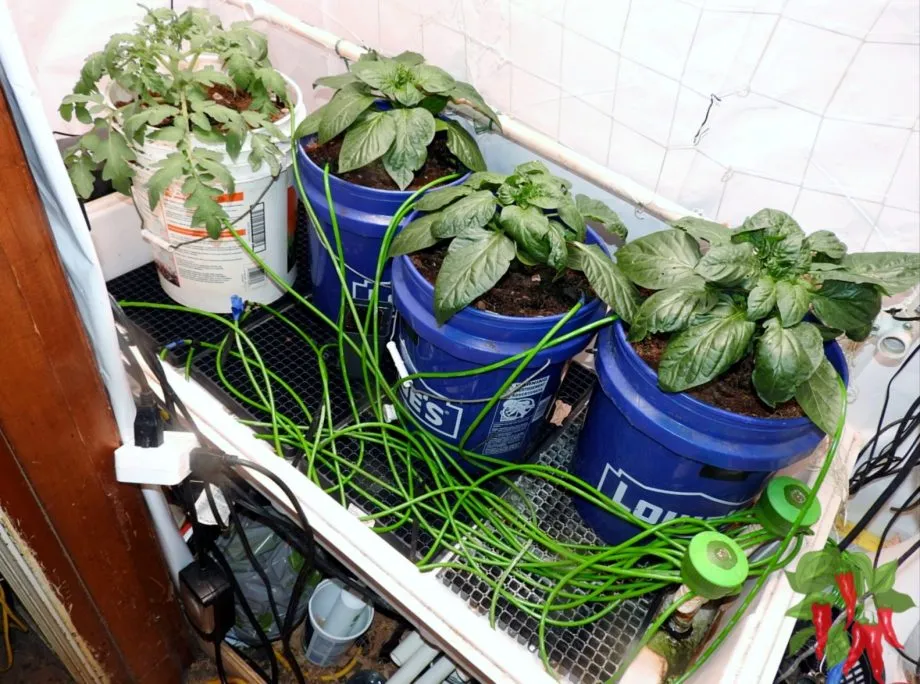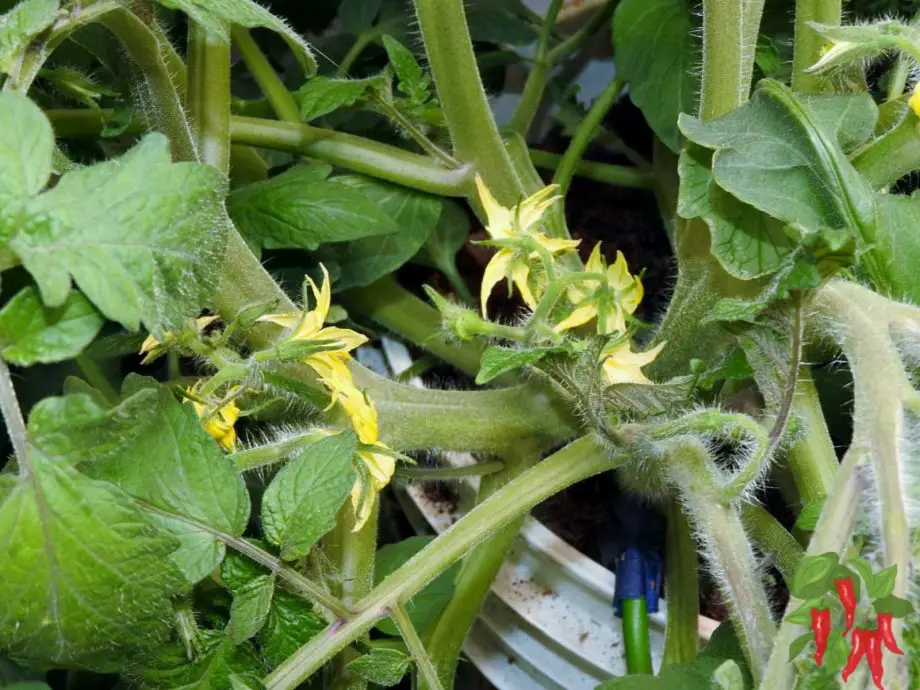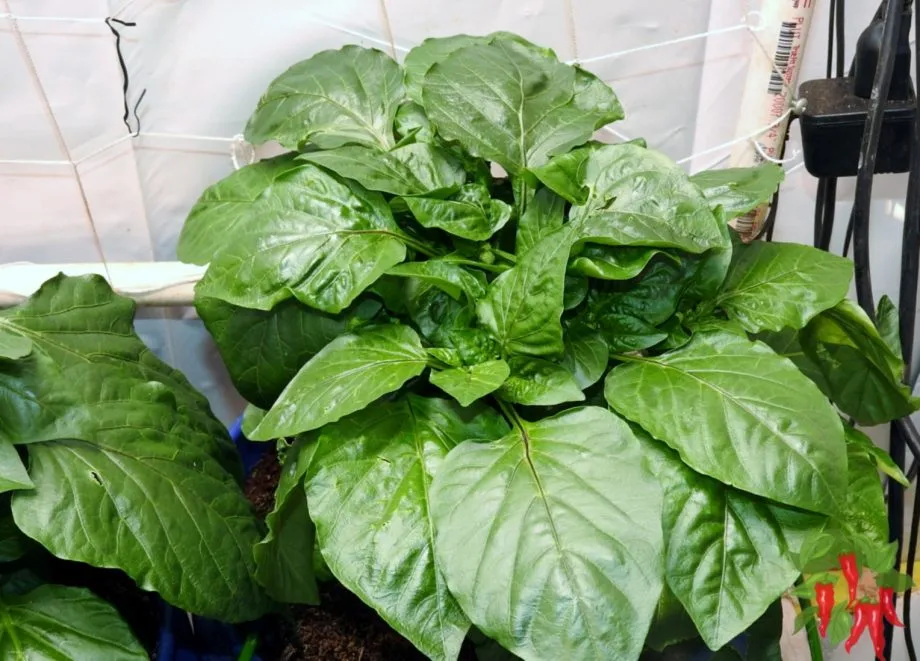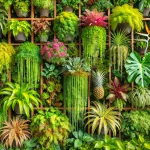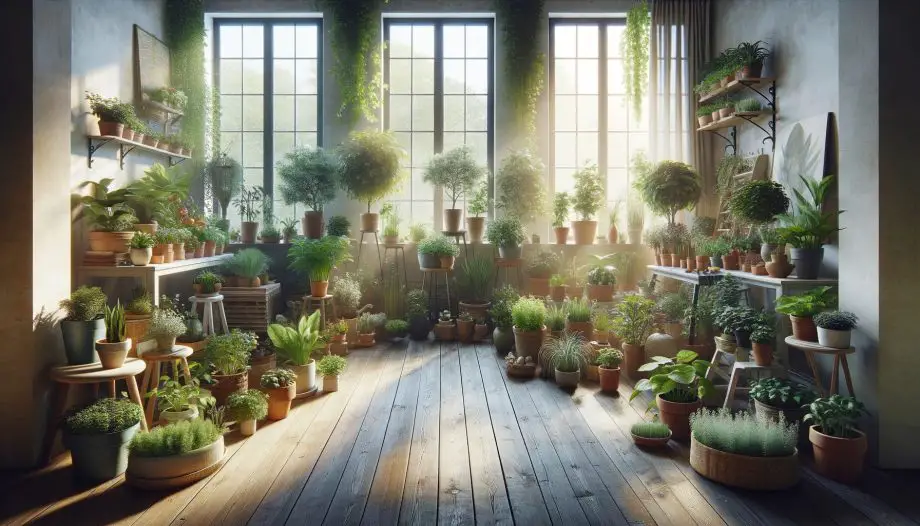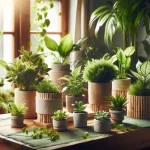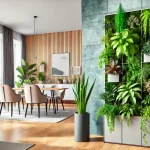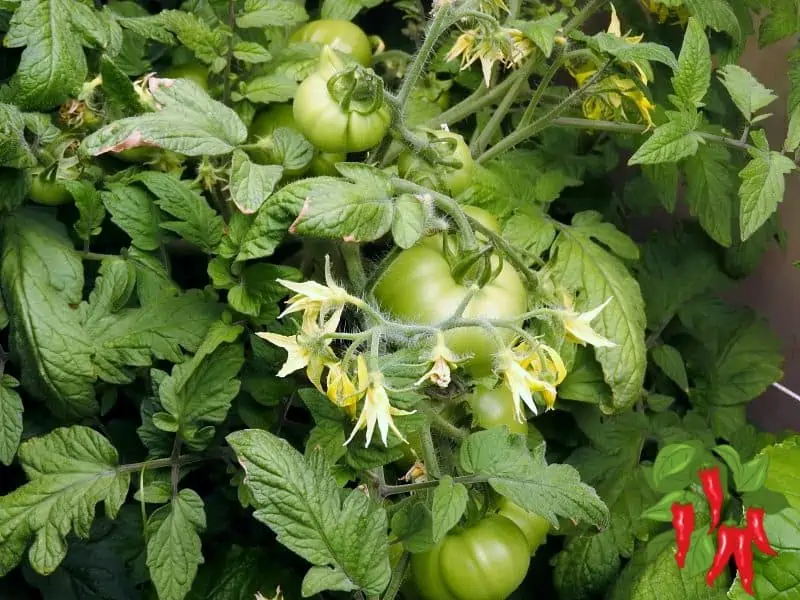This post may contain affiliate links. If you buy something from one of our links we may earn a commission. Thanks
Learn how to grow hydroponic peppers indoors with our easy-to-follow guide. Perfect for urban gardeners!
How To Grow Hydroponic Peppers Indoors Video
Well howdy everyone we’re going into my grow closet in this video and I want to talk about how to grow peppers indoors with hydroponics.
Key Takeaways:
- Growing hydroponic peppers indoors allows for year-round cultivation, free from outdoor weather constraints.
- This efficient method uses less space and water and typically results in faster growth and higher yields compared to traditional soil gardening.
- Perfect for urban gardeners seeking fresh, home-grown produce.
Ever wondered how to grow hydroponic peppers indoors? Whether you’re a green thumb or a gardening newbie, our guide makes it simple and fun to cultivate your own vibrant, flavorful peppers right in the comfort of your home.
Let’s dive into the nitty gritty of indoor hydroponics and spice up your gardening game!
Growing Hydroponic Peppers
What is Hydroponic Gardening?
Hydroponic gardening is a modern, soil-less cultivation method where plants are grown in a nutrient-rich water solution.
This innovative approach allows for precise control over the nutrients and environment, leading to healthier and faster-growing plants.
Benefits of Hydroponics in Indoor Gardening
The benefits of using hydroponics for indoor gardening are numerous. It’s an efficient way to grow plants in limited spaces, like apartments or areas with poor soil quality.
Hydroponics also reduces common gardening challenges, such as pests and weeds, and often results in higher yields.
Growing Peppers Indoors with Hydroponics
Growing peppers hydroponically indoors is an exciting venture. It allows gardeners to produce fresh, flavorful peppers year-round, independent of the outdoor climate.
This section of our guide will delve into the essentials of setting up and maintaining a hydroponic system specifically for peppers, ensuring a successful and bountiful harvest.
Understanding Hydroponic Systems
Definition and Basics of Hydroponics
Hydroponics is a revolutionary way of growing plants where soil is replaced by a water-based, nutrient-rich solution.
In this system, plant roots directly absorb essential minerals from the water, enabling them to grow faster and healthier.
This method stands out for its efficiency in water and nutrient use, making it a sustainable choice for modern gardening. With hydroponics, you have more control over the growth conditions, leading to fewer diseases and pests.
Types of Hydroponic Systems Suitable for Peppers
Peppers thrive in various hydroponic systems, each with its unique advantages:
- Deep Water Culture (DWC): This simple system submerges plant roots in a nutrient solution, providing constant access to water, nutrients, and oxygen. It’s ideal for beginners due to its low maintenance.
- Nutrient Film Technique (NFT): Here, a thin film of nutrient solution flows continuously over the roots. It’s great for space efficiency and allows easy access to monitor plant health.
- Ebb and Flow System: Also known as flood and drain, this system periodically floods the root zone with nutrients, then drains back. It suits peppers well, as it mimics natural wet-dry cycles.
- Drip Systems: A highly controllable system where nutrient solution is dripped onto the roots. This is perfect for larger pepper plants, as it allows precise nutrient management.
- Aeroponics: A more advanced system where roots are suspended in air and misted with nutrients. It offers excellent air exposure and rapid growth but requires more technical knowledge.
Each of these systems can be adapted to suit indoor conditions and personal preferences, making hydroponic pepper cultivation a versatile and rewarding endeavor.
I recommend starting with drip systems or flood and drain systems aka ebb and flow systems.
You can grow with coco coir which is actually a hydroponic medium or you can use hydroton, grow stones, or perlite.
I am using coco coir for my peppers and tomato plants
Preparing for Your Hydroponic Pepper Garden
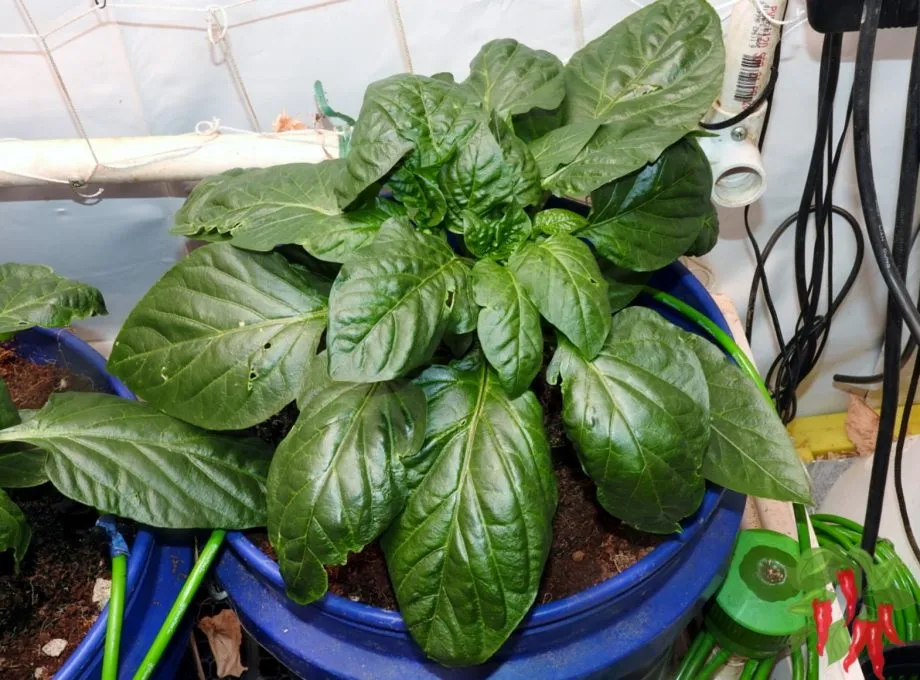
Choosing the Right Variety of Peppers for Hydroponics
Selecting the right type of pepper is crucial for hydroponic success. Look for varieties that are known for their compact growth and high yield.
Sweet bell peppers, jalapeños, and cherry peppers are excellent choices for beginners. I am growing Burpee Candy Apple Hybrid sweet peppers.
Consider the size of the mature plant and your available space when making your selection.
By the way, red peppers and green peppers are the same with the red ones being more mature but both are delicious.
The tomato is a determinate version of Early Girl although regular Early Girl is indeterminate. If you grow tomatoes choose smaller determinate varieties.
Necessary Equipment and Materials
To start your hydroponic pepper garden, you’ll need specific equipment and materials to ensure your plants thrive.
Hydroponic Containers
-
- 5-Gallon Buckets: These are ideal for individual pepper plants. Ensure they have enough space for root growth and are easy to manage in your indoor space.
- Make sure your containers have drainage holes.
Growing Medium
-
- Coco Coir: This is a popular choice for hydroponic gardening due to its excellent water retention and aeration properties. It supports root development and facilitates efficient nutrient uptake.
Hydroponic Nutrient Solutions
-
- A balanced, water-soluble nutrient solution is vital for hydroponic gardening. Look for formulations specifically designed for vegetables or peppers, providing essential elements like nitrogen, potassium, and phosphorus.
- There are many good nutrient formulas for hydroponics. I use Jack’s 3 21 formula because it’s cheap and effective and used by many commercial greenhouses.
Lighting Systems
-
- Adequate lighting is crucial for pepper growth. LED grow lights are energy-efficient and provide the broad spectrum of light that peppers need.
- Position them to ensure even light distribution without overheating the plants.
- You will want 30-35 watts per square foot (measured at the wall) for high-light plants like peppers or tomatoes.
Irrigation and Drainage Setup
-
- A reliable irrigation system ensures your peppers receive the right amount of nutrient solution. Drip or ebb and flow systems are popular choices. Additionally, ensure proper drainage to prevent waterlogging, which can harm the plants.
- I use open-ended drip lines because they don’t clog like an emitter can.
Setting up these components correctly lays the foundation for a successful hydroponic pepper garden. With the right setup, you can enjoy fresh, home-grown peppers right from your indoor garden.
Setting Up Your Hydroponic System
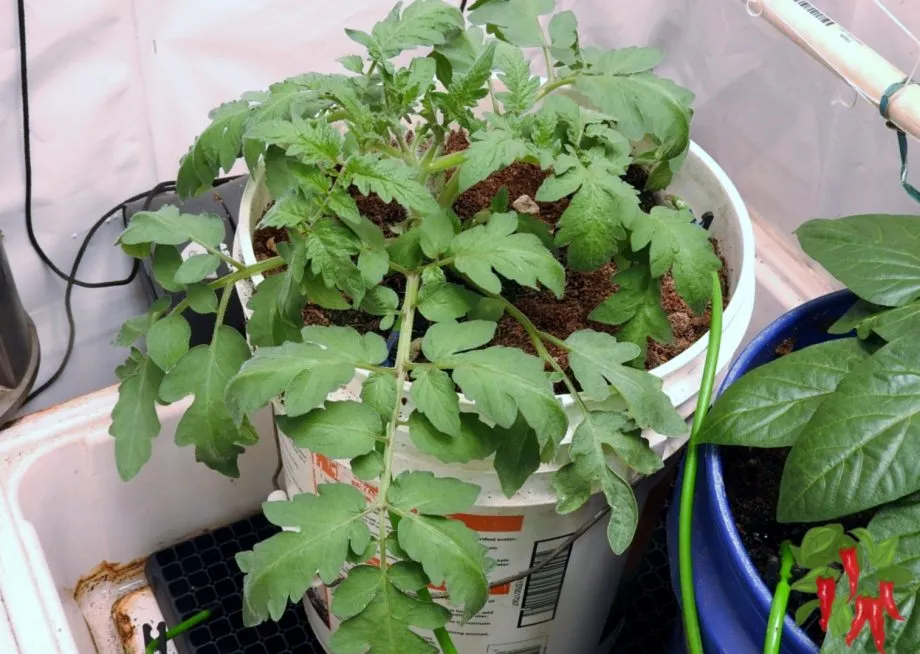
Setting up your hydroponic system correctly is crucial for the success of your indoor pepper garden. Here’s a step-by-step guide to get you started.
1. Setting Up Containers and Growing Medium
- Choose Your Containers: Start with 5-gallon buckets or similar-sized containers. Make sure they have holes in the bottom for drainage.
- Prepare the Growing Medium: Fill the containers with coco coir, a popular choice for hydroponic gardening. It’s lightweight and provides excellent aeration and moisture retention.
- Position the Plants: Place your pepper seedlings in the center of the containers, ensuring the roots are well-covered with the medium.
- You will need a flood tray or large tote to keep your plants in. I use a flood tray in the video, it can be used for ebb and flow or top-feed drip, but I prefer drip irrigation.
- You will need a nutrient reservoir and a small pump.
Installing the Irrigation System
- Select an Irrigation Method: A drip system or ebb and flow setup are both effective for peppers.
- Install the Drip Lines: For a drip system, place the drip lines so they can efficiently deliver nutrient solution to the roots.
- Set Up a Timer: Automate your irrigation with a timer to ensure consistent and regular watering.
I am using Floriflex manifolds and tubing. I use their open flow bubbler.
Their tubing is very flexible and easy to work with.
If you are going to use drip irrigation this is the way to go.
Pro tip: When you cut your irrigation lines make them all the same length or they won’t distribute the water equally.
Choosing and Installing the Right Lighting
- Select the Lights: LED grow lights are ideal for their efficiency and spectrum range. Make sure they cover the light needs of your pepper plants.
- Install the Lights: Hang the lights above the plants, adjusting the height as they grow. The lights should be close enough to reach the plants but not so close as to cause heat stress.
Tips for Arranging Your Indoor Hydroponic Setup
- Ensure Adequate Space: Arrange your containers so each plant has enough space to grow without competing for light or nutrients.
- Consider Accessibility: Set up your system in a way that makes it easy to access for maintenance, such as pruning, harvesting, and checking nutrient levels.
- Monitor Environmental Factors: Keep an eye on temperature and humidity levels in your growing area. Peppers prefer a warm environment with moderate humidity.
By following these steps, you’ll create an efficient and productive environment for your hydroponic peppers. This setup will not only promote healthy growth but also make managing your indoor garden more enjoyable and less time-consuming.
Nutrient Management
Nutrient management is a critical aspect of hydroponic gardening. Getting it right can mean the difference between a bountiful harvest and a failed crop.
Importance of Nutrient Balance in Hydroponics In hydroponics, plants rely entirely on the nutrient solution for their growth.
Unlike soil, which naturally contains nutrients, the water in a hydroponic system must be carefully balanced with the right nutrients.
An optimal nutrient mix ensures that your peppers receive all the essential elements they need for healthy growth, flowering, and fruiting.
How to Mix and Apply Hydroponic Nutrients
- Choosing a Nutrient Formula: For peppers, a well-rounded nutrient solution like Jack’s 321 formula is ideal. This formula combines essential nutrients in the right proportions.
- Mixing the Nutrients: Follow the manufacturer’s instructions to mix the nutrients. For Jack’s 321, you’ll blend the base nutrient with calcium nitrate and Epsom salts in a 3:2:1 ratio.
- Use a TDS meter and pH pen to adjust the strength of your nutrient solution.
- Applying the Solution: Add the mixed solution to your hydroponic system’s water reservoir. Ensure it’s well-distributed and that each plant has access to the nutrient-rich water.
Monitoring and Adjusting Nutrient Levels
- Regular Testing: Use a pH and EC (electrical conductivity) meter to regularly test the nutrient solution. The ideal pH range for peppers is between 5.5 and 6.5, and the EC level will indicate the nutrient strength.
- Adjusting the pH: If the pH is outside the optimal range, use pH up or down solutions to adjust it. This ensures that nutrients are available for uptake by the plants.
- Balancing Nutrients: Monitor the growth and health of your peppers. Signs of nutrient deficiencies or excesses may require adjusting the concentration of your nutrient solution.
- I recommend 300 ppm for small plants, 600 ppm for larger plants, and 1000-1200 ppm for flowering plants. Dont overfertilize. Less is more!
- Changing the Solution: Regularly replace the nutrient solution in your system to maintain its effectiveness and prevent the buildup of harmful substances.
Effective nutrient management in hydroponics not only supports robust growth but also maximizes the yield and quality of your hydroponic peppers.
By carefully mixing, applying, and monitoring your nutrient solutions, you can create a thriving environment for your indoor garden.
Visit my Amazon Influencer Page for videos and gardening products Grow Your Own Garden

